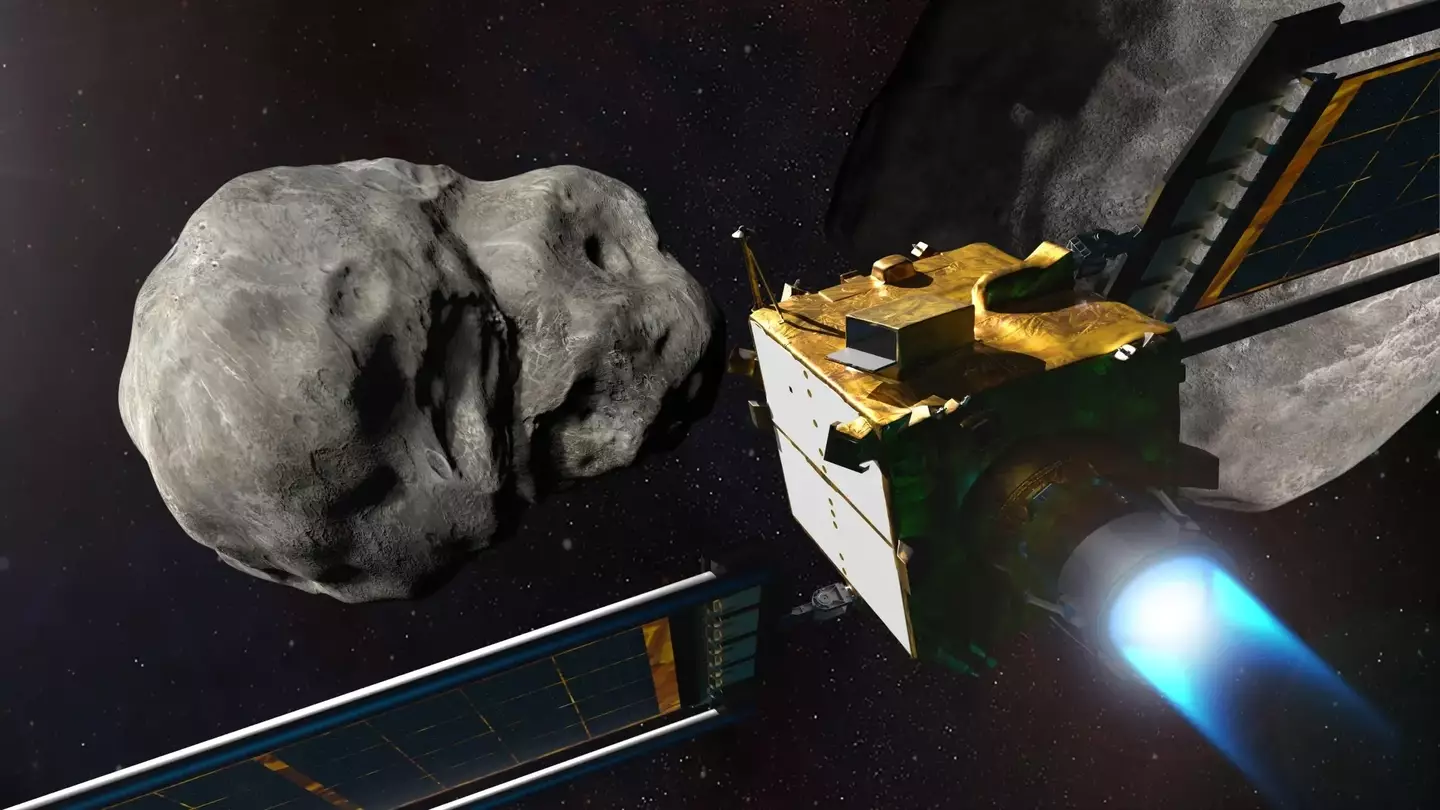Experts have warned that NASA's asteroid deflection system could inadvertently send one towards Earth.
The Double Asteroid Redirection Test (DART) was built by the John Hopkins Applied Physics Laboratory for NASA’s Planetary Defense Coordination Office (PDCO).
It launched in November 2022, and travelled for over 10 months before colliding with the asteroid Dimorphos.
"The success of DART is helping to advance theoretical asteroid deflection models and enabling researchers to better understand how – and when – a kinetic impactor spacecraft could be used to deflect an Earth-bound asteroid," explained NASA.
Advert
However, in new research, experts have warned how locating the right spot to smash the asteroid is crucial in successfully diverting it.
In new research presented at the EPSC-DPS2025 Joint Meeting in Helsinki this week, experts warned how hitting the wrong spot carries a risk of sending the asteroid through a 'gravitational keyhole', which could navigate it back to Earth.

"Even if we intentionally push an asteroid away from Earth with a space mission, we must make sure it doesn't drift into one of these keyholes afterwards. Otherwise, we'd be facing the same impact threat again down the line," said Rahil Makadia, a NASA Space Technology Graduate Research Opportunity Fellow, as per Science Daily.

Advert
When DART smashed into Dimorphos, which was a minor-planet moon of the asteroid called Didymos, it posed zero threat to Earth during the experiment, with it being around 11 million kilometres from our planet when struck.
The experiment was an overwhelming success, shortening its orbit of Didymos by 32 minutes when the experiment had hoped to shorten it by 73 seconds.
However, scientists warn that for an asteroid orbiting the sun, just a small change to its orbit could send it through a keyhole.
"If an asteroid passed through one of these keyholes, its motion through the Solar System would steer it onto a path that causes it to hit Earth in the future," said Makadia.

Advert
For this reason, it's crucial to locate the best spot on the asteroid so the chances of pushing it toward a keyhole are kept to a minimum.
To help with this, Makadia's team has developed a method of calculating probability maps on the surface of asteroids.
"Fortunately, this entire analysis, at least at a preliminary level, is possible using ground-based observations alone, although a rendezvous mission is preferred," said Makadia.
"With these probability maps, we can push asteroids away while preventing them from returning on an impact trajectory, protecting the Earth in the long run."
LADbible has reached out to NASA for comment.

